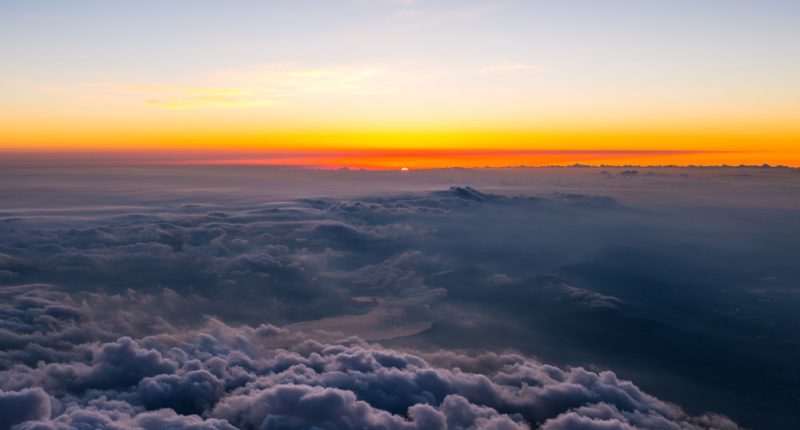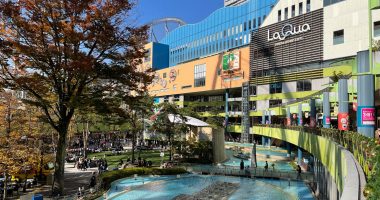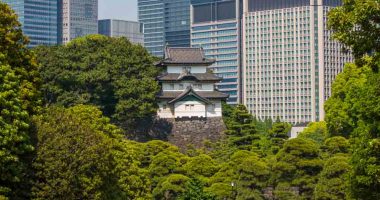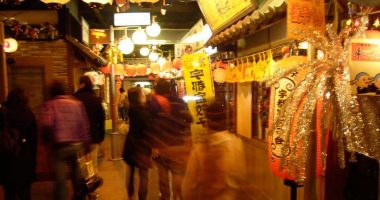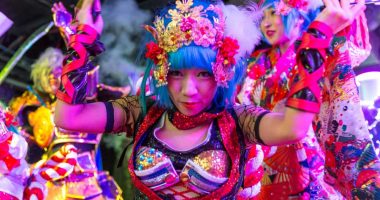Mount Fuji (富士山, Fujisan) stands in Shizuoka Prefecture about 100 kilometers west of Tokyo. It is Japan’s highest mountain at 3,776 meters, and has been revered for millennia—its snow-capped peak and perfectly tapered slopes the subject of countless works of art. Climbing the mountain is a rite of passage for many Japanese and about 300,000 people tread up one of the four main trails every year (the weekends of late July and August see about 8,000 people ascend the mountain each day), many to see the sunrise from the summit.
Climbing the mountain is increasingly popular with tourists because it doesn’t require any technical expertise, and with direct buses from Shinjuku to the trail starting point, it is also very easy to reach. The below is a guide for first-time climbers to ensure a safe and enjoyable climb.
When can I climb?
The official climbing season is from early July to mid-September (see here for the official dates). Outside of these months the huts on the trails close and an ascent of the mountain is dangerous and strongly discouraged.
What routes can I take?
There are four main routes up Mount Fuji which vary in popularity and difficulty.
- Yoshida Trail. This is the most popular route taken by 70% of climbers. Good facilities at the start and many huts along the route.
- Fujinomiya Trail. The second most trodden route after the Yoshida Trail. One shop and information office at the start of the trail. Descent is along the same route as the ascent which may lead to congestion.
- Subashiri Trail. Starting station is not well developed. Meets the Yoshida Trail at the Old 8th Station hut. Harder then both the Yoshida Trail and Fujinomiya Trail.
- Gotemba Trail. The longest and most difficult trail (starting point is 1,440m), but the Osunabashiri (“Great Sand Run”) down is one of the quickest, letting you descend in leaps and bounds for the small price of a boot full of sand. Very few huts along the trail (the first is at 3,000m). The Gotemba Trail is the most difficult of the four routes.
The Yoshida Trail is by far the most popular, especially among tourists and first-time climbers of the mountain. It is one of the easiest routes with shops and restaurants at the start, and many huts where you can purchase water, snacks, and hot food along the route to the summit. The rest of this post will be a guide to climbing via this trail, but much of the advice applies to the other routes, as well.
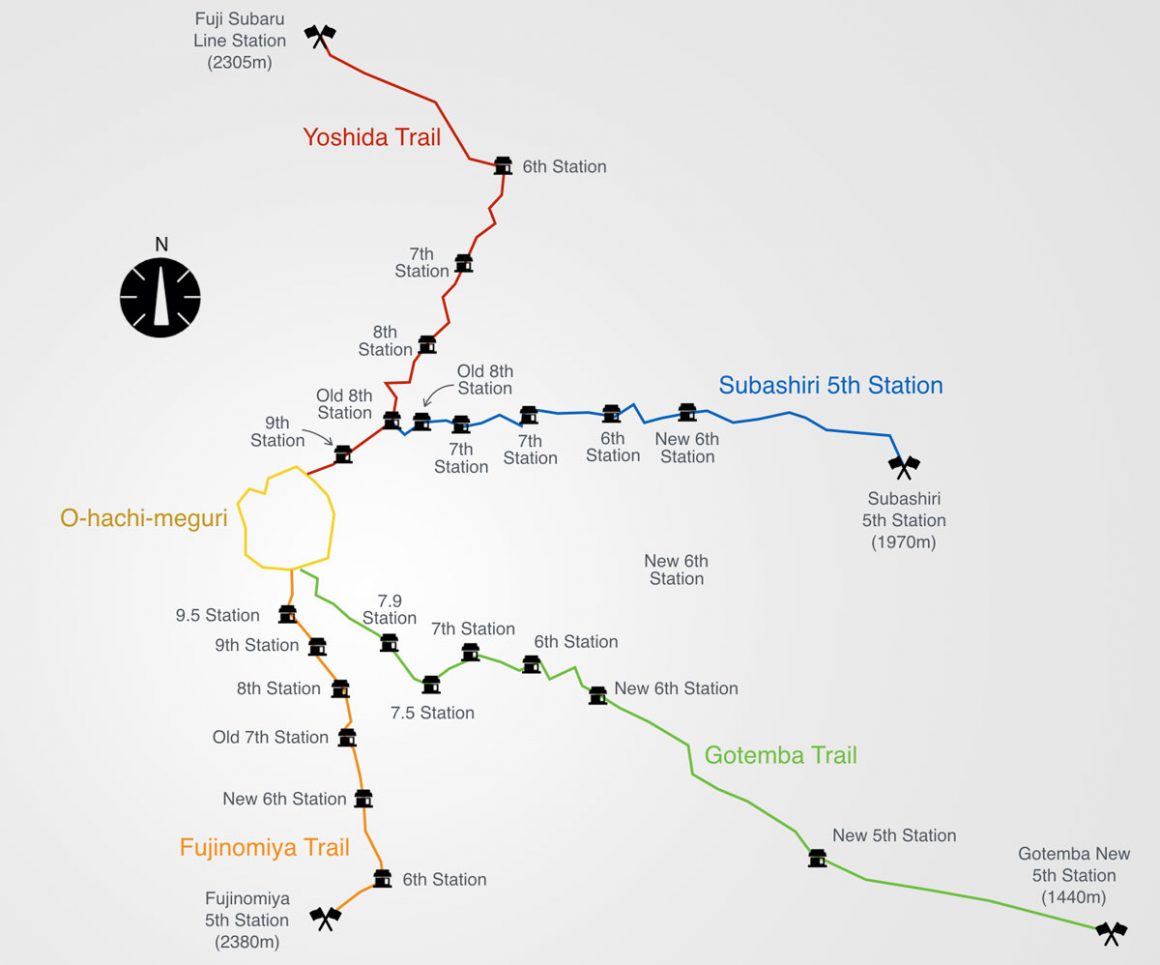
The Yoshida Route
Firstly, while an ascent of Mount Fuji does not require any specialist training or technical climbing gear it is nevertheless difficult: you will need to cover a vertical distance of 1,400m and contend with a significant temperature difference between the starting point and the summit, as well as the possible onset of mild altitude sickness. You need to be reasonably fit and well prepared to make a safe ascent and descent of the mountain.
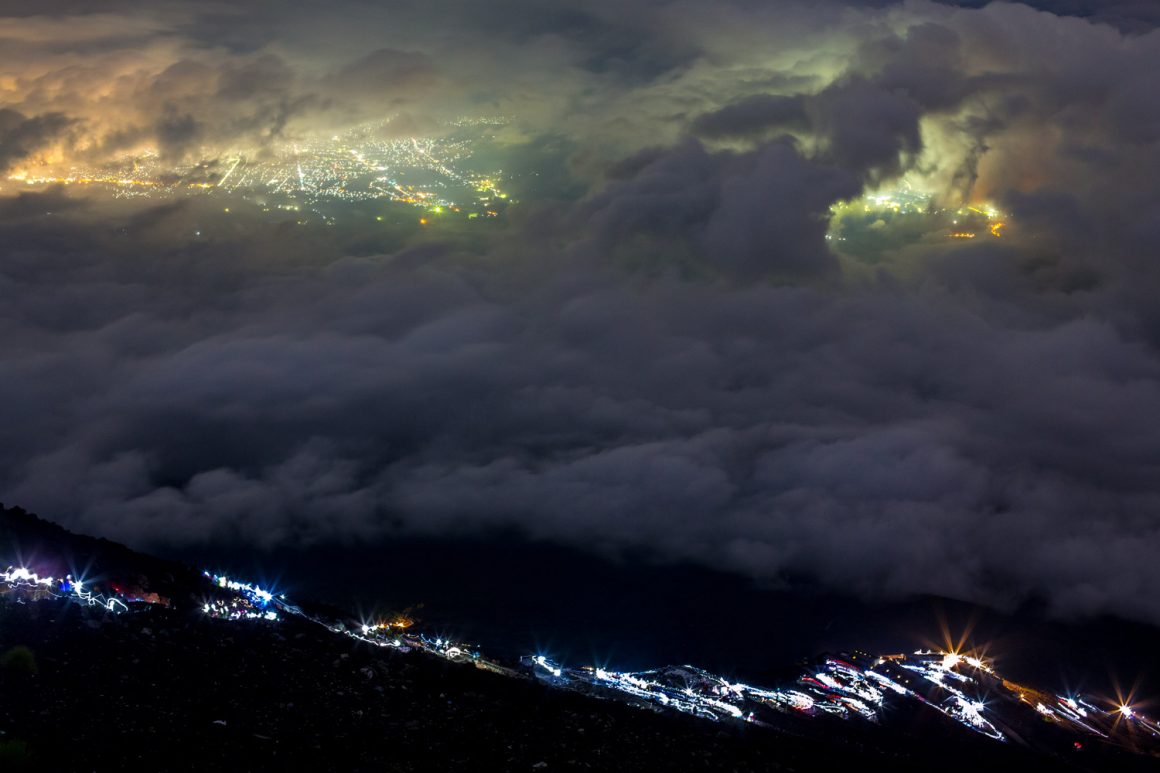
Almost all climbers of the Yoshida Trail start from the Subaru Line 5th Station. Here there are a few restaurants, gifts shops that also sell a limited range of outdoor gear, toilet facilities (¥100 charge), and an information desk. The route to the summit from the Subaru Line 5th Station is 5.8km and takes 5-7 hours.
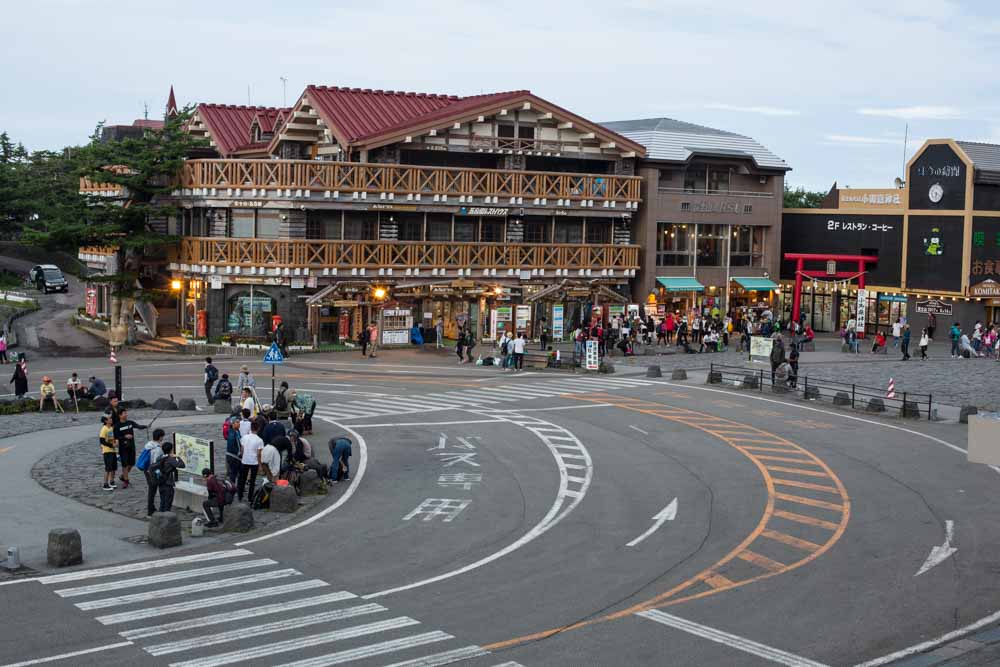
The initial section of the route is actually a walk down a wide, muddy trail which has some wondering if they’re heading in the right direction. The climb starts after a few hundred metres when you will see a sign for the summit and a narrow, rockier trail leading upwards. You will pass this point again on your way down.
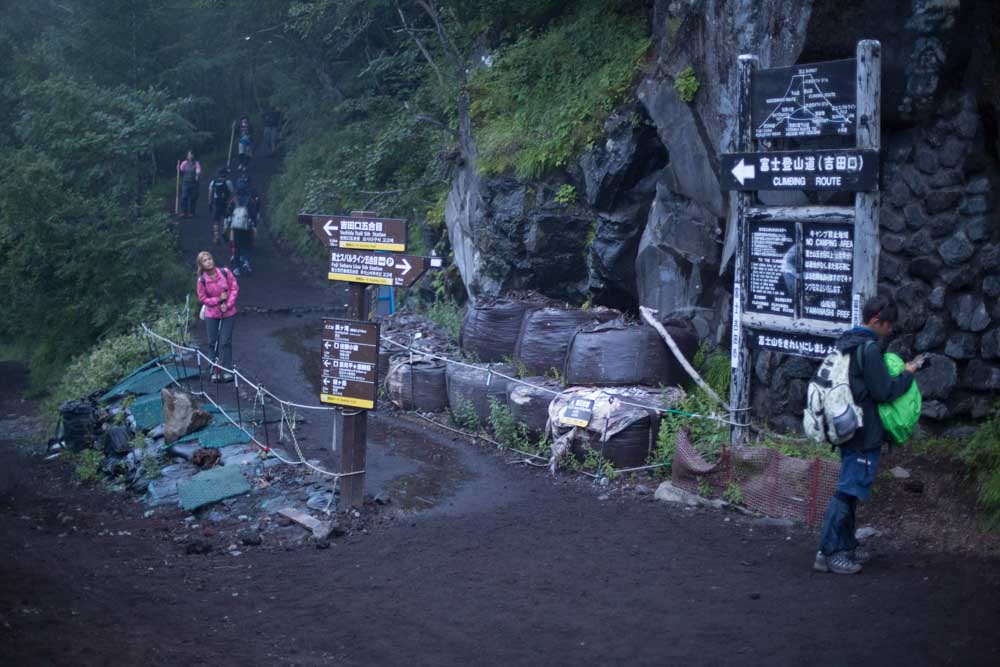
The walk to the 6th station takes just under an hour. From here the path becomes steeper and very craggy, requiring a bit of scrambling in places, but the stations are fairly evenly spaced providing ample opportunities to take a rest before the next section. Depending on the time, bottlenecks are common at certain points on the trail, but if you’re ahead of the groups that flock out of the huts around midnight then this shouldn’t be a problem.
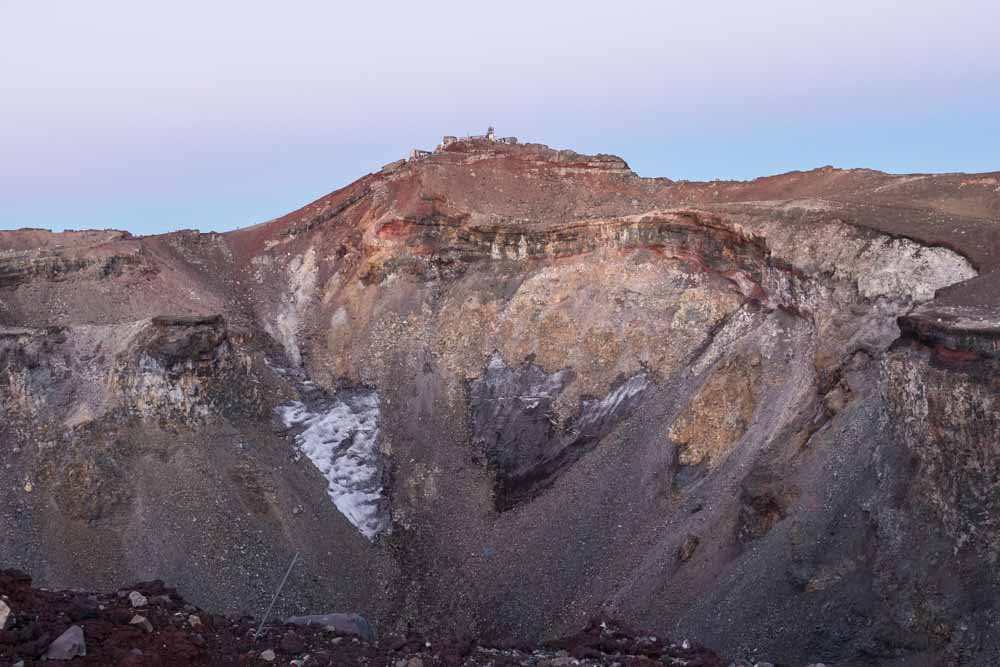
The huts at the top of the mountain are at 3,715m, but although the signs read “summit” this isn’t technically true: the true summit of Mount Fuji is Kengamine Peak at 3,776m. It is reached via the O-hachi-meguri trail—a 4 kilometer course around the crater of the mountain. Extreme care is needed when walking this trail in bad weather.
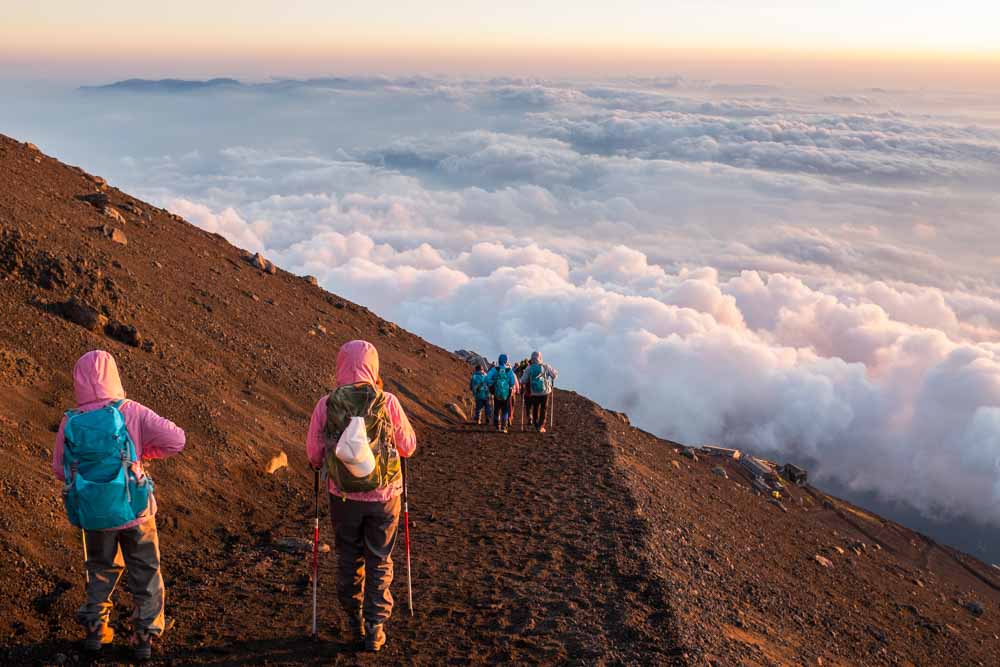
The descent for the Yoshida Trail is to the left after you’ve walked past the row of huts at the summit. It is a 6.9km trail that feels interminable because for the most part it just zig-zags down the mountain, which is exceptionally tedious and hard on the knees. Furthermore, the dry rock surface is extremely easy to slip on—trekking poles are a huge help in keeping yourself stable. Some do hurtle down the path as that seems like the easier option over constantly holding yourself back, but the rocks are large and it’s easy to twist an ankle (not to mention collide with other climbers) so doing so is not advised. On clear days, however, the views over the clouds and onto the green fields below are spectacular. Note that there are no huts on the way down and only two toilets.
Ways to tackle the ascent
Not everyone choses to see the sunrise from the top of Mount Fuji: some make an ascent in the morning and are sipping sake and congratulating themselves at their hotel by evening; others choose to climb in the evening without rest at one of the mountain huts. How you choose to climb will determine what you need to take and how you need to prepare.
(1) Day climb and descent
Set off from the Subaru Line 5th Station early in the morning (ideally, before 9am) and aim to reach the summit in the early afternoon. Enjoy the views and start the descent before 3pm to get back by nightfall.
Pros…
- The easiest way to climb the mountain
- Do not have to deal with such large changes in temperature between night and day
- You can enjoy the views on the way up
Cons…
- You won’t get to boast that you’ve seen the sunrise from the top of Mount Fuji!
(2) Stay at a lodge and finish the ascent at night
Set off from the Subaru Line 5th Station in the morning (between 10am and midday) and aim to arrive at a lodge near the 7th or 8th stations in the evening. The lodges (think small space on the floor next to strangers where you can spread your sleeping bag) need to be booked in advance and cost ¥5,000-8,000 per person. Resting at a lodge will not help much with any altitude sickness (it takes days for your body to acclimatize to the altitude), but it will break up the climb and let your legs recover—recommended for those who are not so physically fit. The lodges also serve hot food and some provide food for the rest of the climb. See here for contact details and information about lodges along the Yoshida trail.
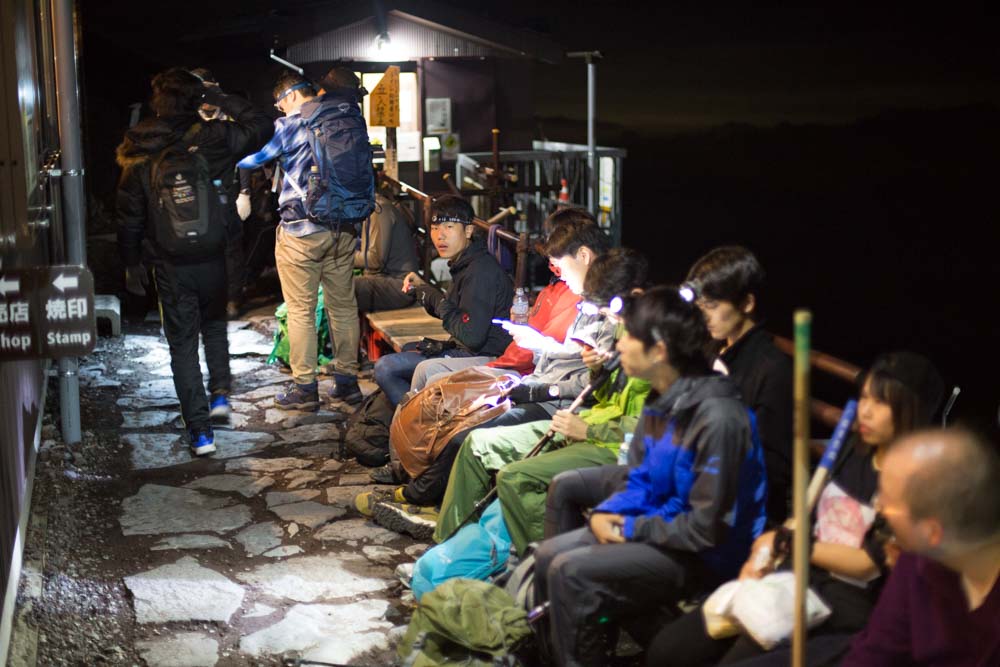
Depart for the summit around midnight to arrive in time for the sunrise (around 4:30-5:00am during the climbing season). After watching the sunrise start the descent to get back to the Subaru Line 5th Station for around 9am (the first bus back to Shinjuku is at 10am).
Pros…
- Easiest way to see the sunrise.
- Recommended for those who aren’t sure if they have the stamina to make the ascent in one go
- You can enjoy the views on the way up
Cons…
- Expensive. A stay at one of the lodges is costly and not particularly comfortable. You’ll typically be given no more than a space to spread your sleeping bag and bunch up against other climbers.
(3) Start the ascent in the evening without stopping
Depart from the Subaru Line 5th Station in the evening (after 6pm). The last bus from Shinjuku arrives at 7:20pm which might be cutting it a little fine unless you confident you can make the ascent without too many breaks. Make the ascent in one go (there are benches outside each of the huts on which you can take short breaks). Arrive at the summit between 1-4pm in time for the sunrise. After watching the sunrise start the descent to get back to the Subaru Line 5th Station for around 9am (the first bus back to Shinjuku is at 10am)
Pros…
- Cheapest way to see the sunrise because you don’t pay for accommodation.
Cons…
- Physically demanding. You will basically need to hike for 6-10 hours with only short breaks and the first chance to sleep will be on the bus the next morning.
Tips to see the sunrise
You should check the official time of sunrise beforehand but during the official climbing season it is between 4:30am and 5:00am. That means you want to reach the top at least an hour before because (1) the starlit sky with the city lights below is equally spectacular, and (2) the trail to the summit can become extremely crowded and the resulting bottlenecks can mean significant delays. If you don’t allow for this in your schedule then you risk being a few hundred meters away from the summit as the sun peeks over the clouds (and after all you want to be able to boast that you saw the sunrise from the top of Mount Fuji, right?).
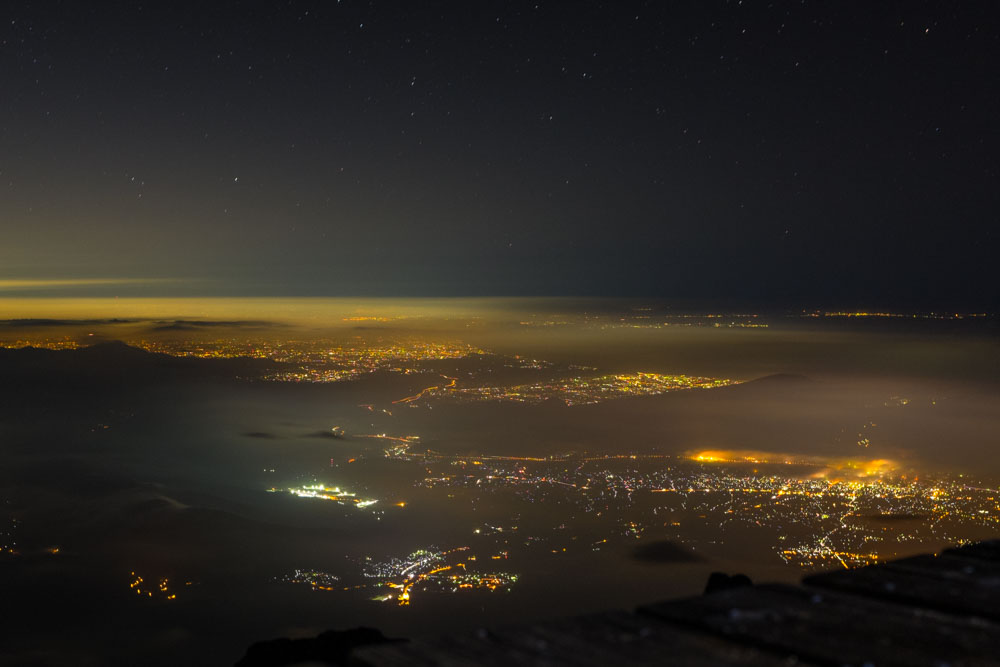
The huts at the top of the mountain do not open until 3am. They have a simple menu (cup noodles, udon, hot chocolate, etc.) but, more importantly, let you stay inside in the relative warmth while you eat. For those making a night ascent, if you do find yourself making good time then it is advisable to hold back and rest at one of the lodges at the 8th stations because they will be open and provide much more cover from the wind than the exposed summit. The only things operating before 3am on the summit are vending machines which may or may not be sold out of hot coffee.
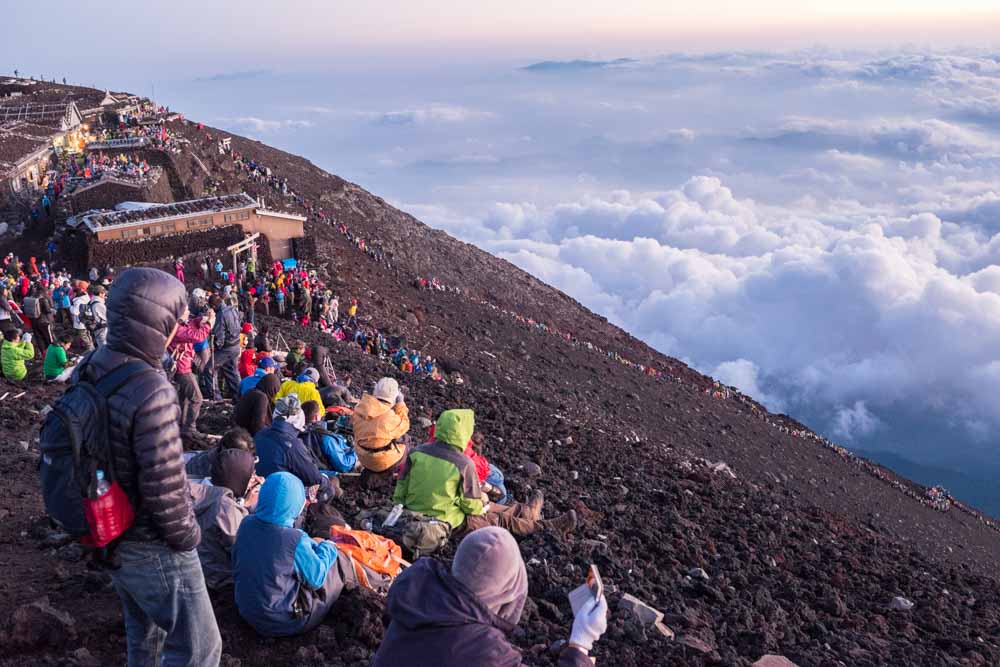
What do I need to bring?
Firstly, do not let the summer temperatures at sea level convince you to climb in nothing more than a T-Shirt and a pair of shorts. Temperatures can drop to close to zero at the summit, and that’s before you take into account the significant windchill factor.
While it is critical that you prepare adequately for the freezing temperatures near the summit, the early stages of the climb (especially if you start the ascent during the day) will have you soaked in sweat if you set out in a large goose-feather down. Ideally, you should have several layers which you can put on as you climb the mountain.
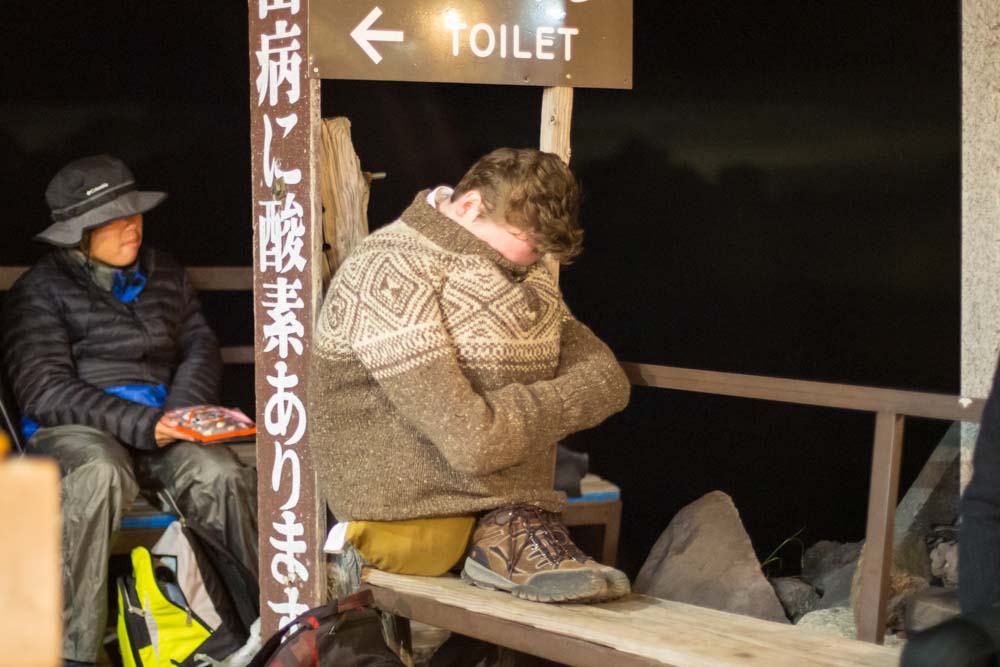
The below is a list of essential clothing and other items to make a safe climb. Yes, there will inevitably be someone climbing with a few t-shirts, a jumper, and trainers—and if it’s a still and dry night that may just about suffice, but weather during July and August in Japan (let alone on a mountain) is unpredictable, and if you were caught in a storm then a lack of adequate clothing could lead to hypothermia.
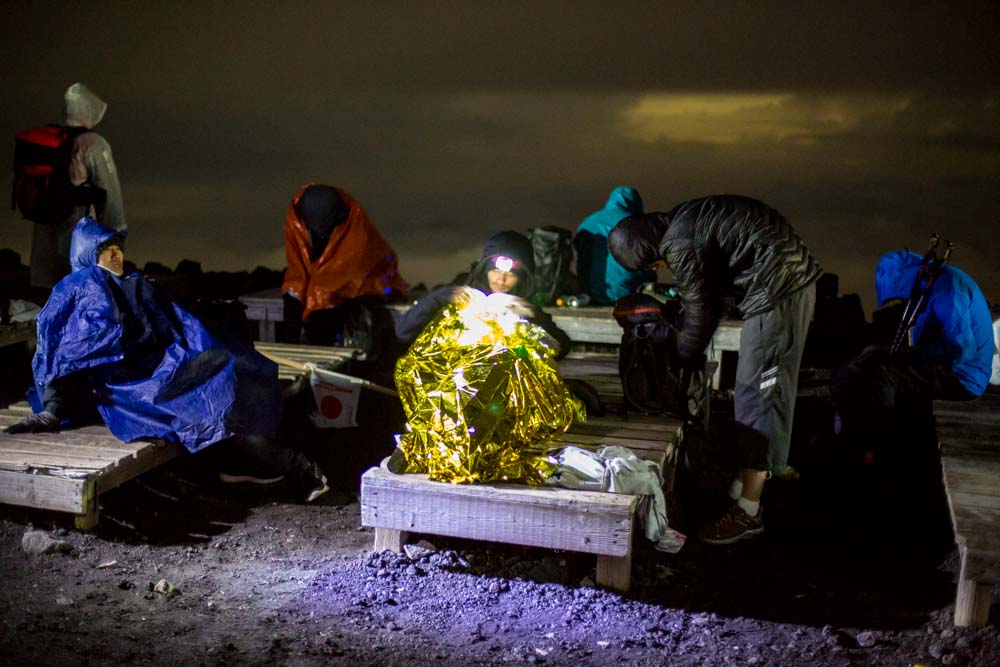
Essential clothing
- A long-sleeve thermal vest (winter running tops are ideal)
- A fleece
- A thin, lightweight down jacket
- A waterproof jacket
- Thermal inner trousers
- Lightweight hiking pants
- Waterproof trousers
- Thick socks
- Robust, waterproof hiking boots
- A thick, woolen beanie
- Gloves (a least a pair of mittens)
Essential gear & other items
- 30+L backpack. If the backpack isn’t waterproof then you should buy a waterproof cover
- A headlamp and set of spare batteries. The trail is often rocky and small stones can make it easy to slip if you don’t watch your step.
- Water. Some recommend that you take 2L of fluids with you on the climb, but the huts sell water and sports drinks so those taking the Yoshida or Fujinomiya Trail can buy on the way (doing so also helps lighten your load).
- Food. Climbing in the cold for several hours will drain your energy. Energy bars, chocolate bars, bananas, and the like are essential, although these items are also sold at the stations along the way
- Cash. The lodges do not take credit cards. Cash donations of ¥200 are also requested for use of the toilets, and there is a ¥1,000 contribution to be made at the starting point at the Subaru Line 5th Station
Recommended
- Space blanket. The handful of lodges which serve hot food at the top of the mountain do not open until 3am meaning that if you make an ascent quicker than planned you will be waiting at the top exposed to the wind for 1-2 hours—and it’s only when you stop moving that the temperature takes its toll. Thermal sheets are lightweight and invaluable to keep the wind off your body
- Flashing LED. It will be easier to spot a member of your group from behind if they have one attached to their backpack.
- Oxygen canisters. If you do feel the onset of altitude sickness these do help; although if symptoms are severe the only remedy is to descend
- Trekking poles. ¥1,000 wooden sticks are sold at the departure stations, but these aren’t as light nor as compact as professional trekking poles. Especially important for the descent. Note that for ¥300-500 you can have a stamp burnt into the wood at each checkpoint which makes for a good souvenir afterwards.
- Sunhat and sunglasses. These are for the descent because once the sun comes out you do not have the clouds to protect you on clear days
Should I climb in bad weather?
With the exception of stormy weather conditions, it is still safe to climb in the wind and rain so long as you are well prepared. The question is really, “Do you want to?” If the clouds descend over the mountain then you will be robbed of the views and the sunrise will consist of watching the mist turn from grey to white—scant reward for your effort. Despite being the epitome of beauty from a distance, up close Mount Fuji is actually barren rock with little or no vegetation, so the only real prize will be the boast that you made it to the top. If your schedule allows, you may want to choose a day when the weather looks clear.
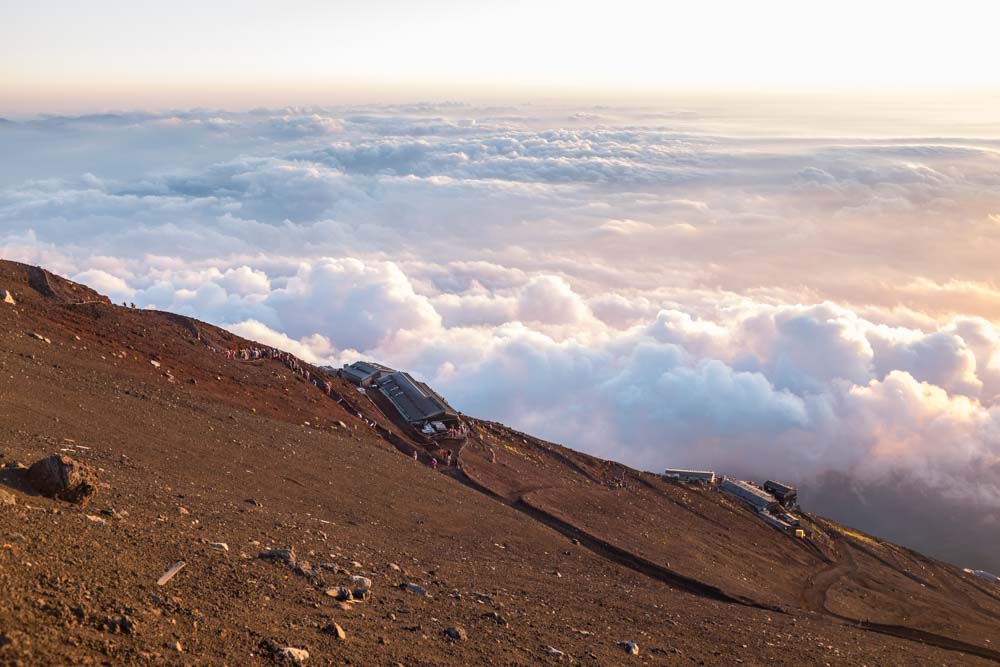
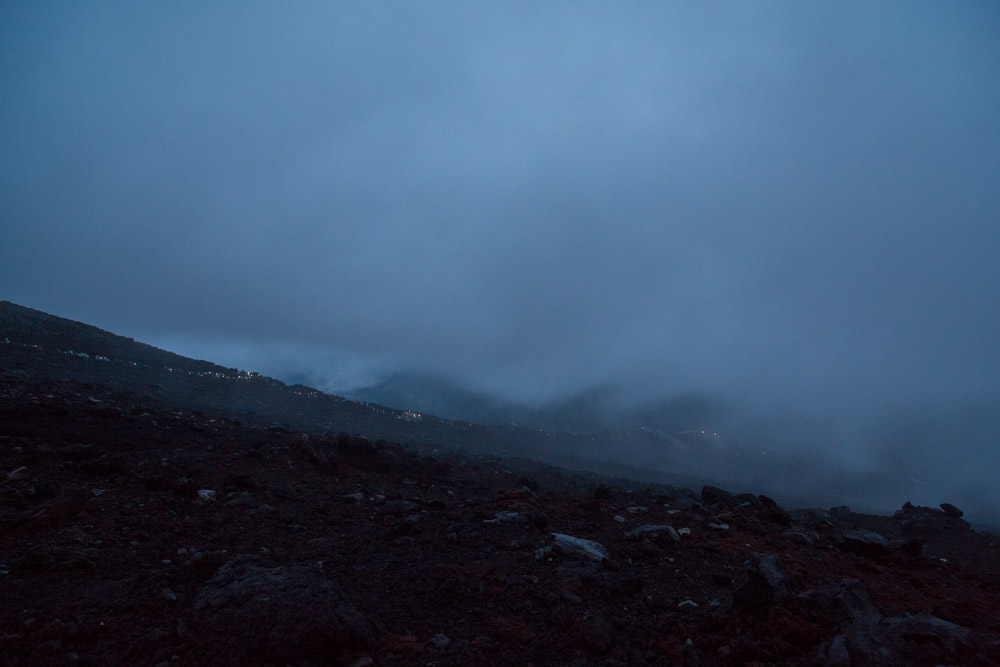
How do I get to Mount Fuji?
Firstly of all, a quick note on getting to the starting point of the other trails.
- Subashiri Trail. Access by bus from Gotemba Station (JR Gotemba Line) or Shin-Matsuda Station (Odakyu Line).
- Gotemba Trail. Access by bus from Gotemba Station (JR Gotemba Line).
- Fujinomiya Trail. Access by bus from Mishima Station (JR Tokaido Line) or Shin-Fuji Station and Fuji Station (JR Tokaido Shinkansen). There is also a highway bus which departs from JR Shizuoka Station (only in summer).
For the Yoshida Trail the easiest way to get to the Subaru Line 5th Station is from Shinjuku South Exit Bus Terminal. Direct buses (both to and from) operate between May and October and cost about ¥3,000 for adults. You will need to book these buses well in advance. See highway-buses.co.jp for details.
If you want to play it by ear and head there as soon as the weather forecast shows no clouds then the direct bus from Shinjuku is unlikely to have any spaces left. In that case, you will need to take a local bus from Fujisan Station (富士山駅) or Kawaguchiko Station (河口湖駅) which leave about once per hour. A train from central Tokyo to either station takes about 2.5-3 hours. See http://bus-en.fujikyu.co.jp/ for details.
Rules & regulations
- A ¥1,000 donation is requested at the start of the trail
- A ¥200 donation is requested for use of the toilets along the route
- No camping or lighting of fires is allowed on the mountain
- All rubbish is to be taken home with you. There are also no bins at the Subaru Line 5th Station. However, trash from items purchased at the huts (cup noodle containers, empty cans, etc.) can be handed back to the staff for disposal.
- Taking rocks or fauna as souvenirs is strictly prohibited
- Use of drones is discouraged by not officially prohibited
